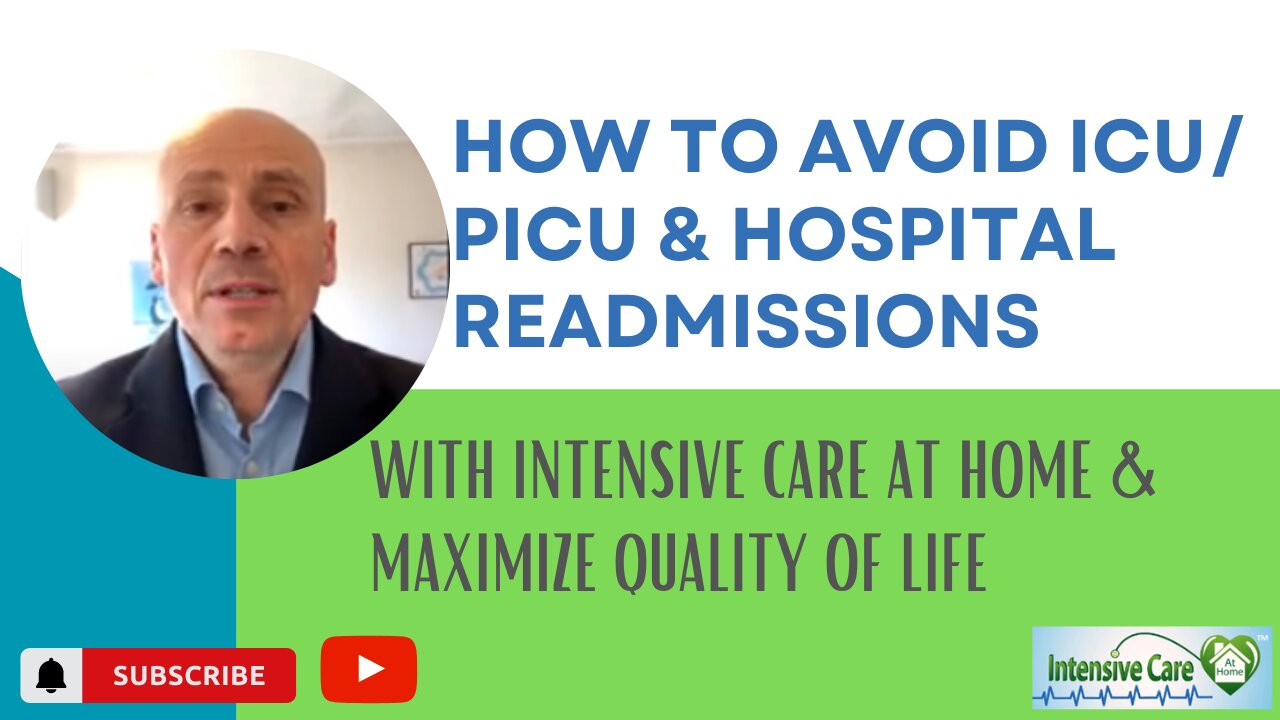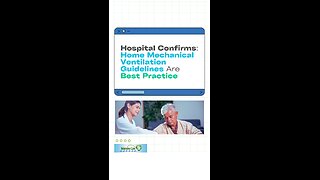Premium Only Content

How to Avoid ICU/ PICU & Hospital Readmissions with Intensive Care at Home& Maximize Quality of Life
How to Avoid ICU/ PICU & Hospital Readmissions with Intensive Care at Home& Maximize Quality of Life
Book your free 15-minute phone consultation here
http://intensivecarehotline.com/scheduling-appointment/
Call directly 24/7
+1 415-915-0090 USA/Canada
+44 118 324 3018 UK
+6141 094 2230 Australia
Email [email protected]
Get 1:1 consulting and advocacy
1:1 phone counselling
http://intensivecarehotline.com/one-on-one-counselling/
Become a member for families of critically ill Patients in Intensive Care
https://intensivecarehotline.com/intensivecaresupport-org-membership/
Immediate action steps http://intensivecarehotline.com/take-control-take-charge/immediate-action-steps/
https://intensivecareathome.com
And if you need a medical record review, click on the link and we can help you with reviewing your loved one’s medical records while they’re in ICU.
https://intensivecarehotline.thrivecart.com/review-of-medical-records/
Facebook Page: https://www.facebook.com/IntensiveCareHotline
Twitter: https://twitter.com/icuhotline
Song: Jarico - Island Music
supported by@FreeBackgroundMusicForCreators
#BackgroundMusicWithoutLimitations
https://bit.ly/2XoXFnb
Hi, it’s Patrik Hutzel from intensivecareathome.com, where we provide tailor-made solutions for long-term ventilated adults and children with tracheostomies. And where we also provide tailor-made solutions for hospitals and intensive care units, whilst providing quality services for our clients including home BiPAP, home CPAP, seizure management, and also Home TPN, and intravenous fluids and IV antibiotic management at home as well.
Now in today’s blog, I want to talk about how we, at Intensive Care at Home, avoid hospital and intensive care admissions. So let me start with, that we provide evidence-based care at home.
When you look at our website at intensivecareathome.com, and you look at the section mechanical home ventilation guidelines, you will see an evidence-based document that clearly confirms that the only way it’s safe to take patients home from intensive care for long-term ventilation with a tracheostomy, for home BiPAP (Bilevel Positive Airway Pressure), CPAP (Continuous Positive Airway Pressure), especially if patients have seizures as well, is with intensive care nurses and critical care nurses with a minimum of two-years critical care nursing experience.
Once again, this is an evidence-based document. And yet we are seeing that the clients who don’t have this evidence-based care, they’re going back to hospitals all the time, or even worse, they die. And I will elaborate a little bit more on this, today in this video.
So I’ve made videos about this before, where we looked after a number of NDIS (National Disability Insurance Scheme) participants with tracheostomies and ventilation. And they were only funded for night shifts with registered nurses with critical care nursing experience. And we highlighted to the NDIS at the time that those clients’ lives are at risk during the daytime when we’re not there. And unfortunately, we were absolutely right.
All three clients that we highlighted to the NDIS at the time died during the day because families or support workers or even general registered nurses could not manage the medical emergencies that unfortunately, inevitably can happen with a tracheostomy. And all three clients passed away before an ambulance could even arrive.
So I’ve made videos about this before and again, if someone from the Quality and Safety Commission or from the NDIS watches this video, I urge the NDIS to step up, and look at those cases again. Because otherwise, it will inevitably go to the media at some point if the NDIS is still trying to sweep these cases under the carpet, because a five-year-old, a 17-year-old and a 60-year-old participant passed away under the watch of the NDIS just as we predicted at the time.
So in order to avoid similar situations, going forward, just again to illustrate that we do have the ability to take patients home from intensive care and pediatric intensive care directly. We have done it numerous times. We keep those clients at home predictably, we maximize their quality of life. We cut the cost of an intensive care bed by 50%. We free up adult intensive care and pediatric intensive care beds that can be used for other people, that need critical care. And we look after those clients at home and we enjoy doing it and we know the quality of life we are providing for our clients and for our families, they can stop living in an intensive care unit. And the families can also stop living in an intensive care unit and they can get on with their lives at home.
Continuation...
https://intensivecareathome.com/how-to-avoid-icu-picu-hospital-readmissions-with-intensive-care-at-home-maximize-quality-of-life/
-
 14:17
14:17
Intensive Care at Home
6 days agoHospital Confirms: Home Mechanical Ventilation Guidelines Are Best Practice
9 -
 16:16
16:16
Robbi On The Record
12 days ago $17.72 earnedThe Dark History of Halloween | What You Should Know
56.5K46 -
 58:18
58:18
Flyover Conservatives
1 day agoThe Truth About Halloween that You DIDN’T Know - Holiday Special - Historian Bill Federer | FOC SPECIAL Show
38.4K2 -
 3:10:46
3:10:46
Ellie_roe
5 hours agoEllie and Errys Halloween Spooktacular || Random Horror Games
16.2K -
 50:27
50:27
Sarah Westall
7 hours agoBig Banks Caught Rigging Market, IMF tells World to “Buckle Up” w/ Andy Schectman
32.2K10 -
 13:54
13:54
Degenerate Jay
14 hours ago $1.15 earned5 Best Superhero Movies To Watch On Halloween
15.6K4 -
 59:03
59:03
NAG Podcast
7 hours agoSarah Fields: BOLDTALK W/Angela Belcamino
25.5K6 -
 1:21:41
1:21:41
Glenn Greenwald
9 hours agoGlenn Takes Your Questions: On the Argentina Bailout, Money in Politics, and More; Plus: Journalist Jasper Nathaniel on Brutality and Settler Attacks in the West Bank | SYSTEM UPDATE #541
82.8K41 -
 3:10:08
3:10:08
Barry Cunningham
7 hours agoPRESIDENT TRUMP TO USE NUCLEAR OPTION? FOOD STAMPS END! | SHUTDOWN DAY 31
49.4K34 -
 1:06:56
1:06:56
BonginoReport
14 hours agoThe Battle Between Good & Evil w/ Demonologist Rick Hansen - Hayley Caronia (Ep.168)
100K38